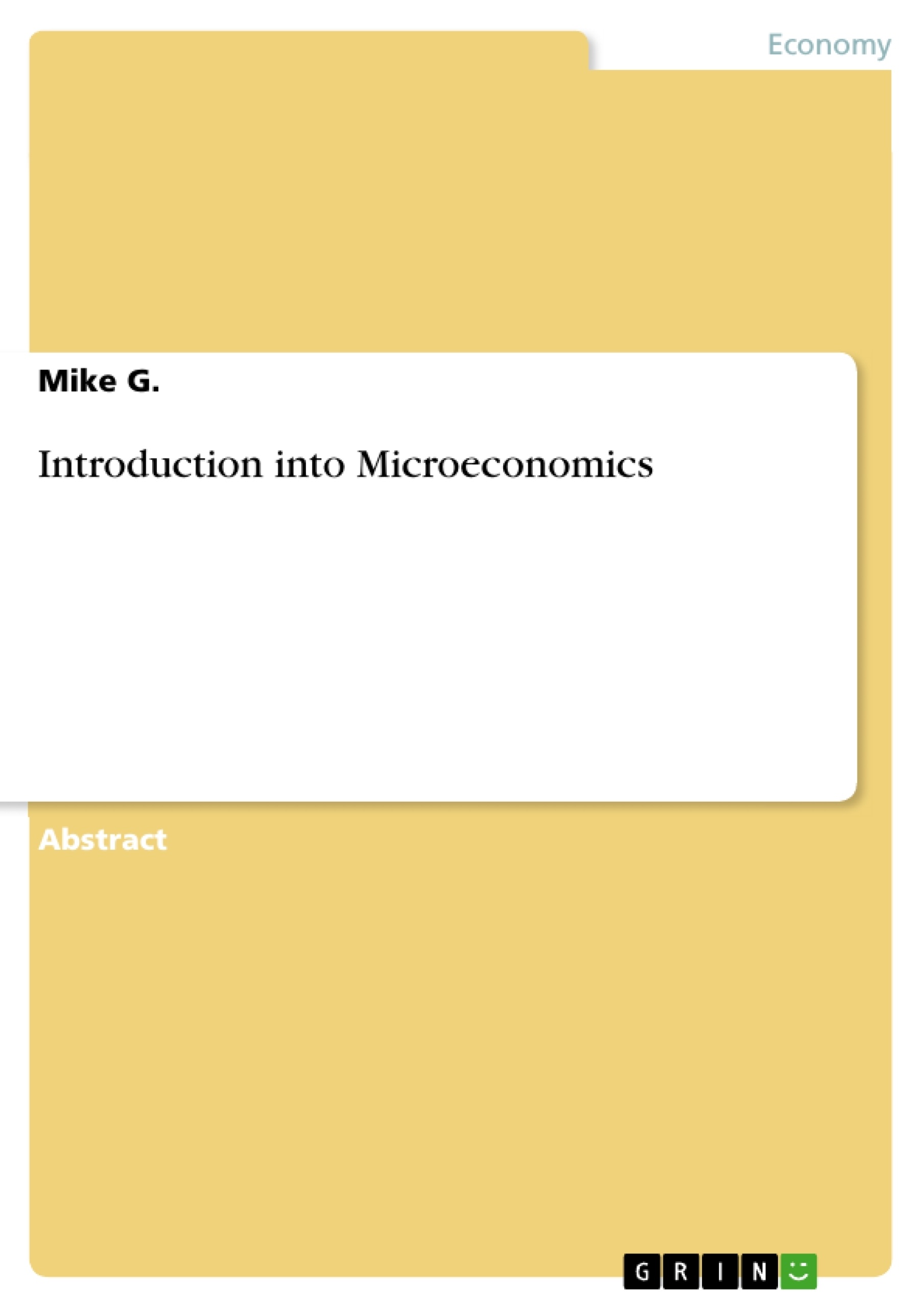Excerpt
Content
Session One: A Simple Economic Model. 3
Session Two: Budget and Preferences. 5
Sessions Three and Four: Utility, Demand and Choice. 8
Lectures 6 and 7: Consumer's surplus, market demand and equilibrium. 15
Lectures 8 & 9: Technology, profit maximization and cost minimization. 21
Lectures 10 and 11: Costs and Supply. 24
Session One: A Simple Economic Model.
A simple economic model – The apartment market.
A model is a simplification of the reality.
Question about whether it is good or not, no question about whether it is right or wrong.
→ Model has to be useful for your purpose.
Important in every model is to state which variables were exogenous and which are endogenous.
Exogenous variables : We take for given, do not explain them, just use them.
Endogenous variables : Outcome of the model, what we want to explain.
Two important instruments for the analysis of every model.
Rationality : Assumption that every individual will choose the best alternative.
Concept of equilibrium : Situation where nobody has incentive to change sth.; always search for an equilibrium and define what you need for this.
Perfect conditions market.
First Assumption: All flats are homogeneous.
Second Assumption: The market contains a lot of landlords and renters.
Exogenous variables: Income of students, commuting costs, etc.
Creating the demand curve by asking for everybody's individual reservation price, the maximum amount of money willing to pay for a flat.
Supply curve is fully price-inelastic because in the short-run the amount of flats can't be increased or decreased.
→ Equilibrium at price p* where every student willing to pay the price will get a flat.
Excess Demand: More demand than supply (upward pressure on the price).
Excess Supply: More supply than demand (downward pressure on the price).
=> We just take the equilibrium for static, neglecting the dynamic processes.
Distinct demand and quantity demanded (as well as supply and quantity supplied).
Maybe because of a building project finished the amount of apartments supplied has suddenly increased.
→ Shift of the supply curve to the right, followed by movements on the demand curve because this still remains unchanged.
→ If the supply curve is inelastic, the consumers have to take the whole price effect by their owns.
Important information about this model.
Market price: p*
Who gets the flats? - The students with the highest reservation price.
Model is not “good” because some assumptions were not realistic.
Rent control: In modern metropolis' the government introduced price ceilings to prevent the rent prices to increase.
Monopoly : Often only big companies have the money to build new apartments and then control them. Assumption of a competitive market is not realistic.
Market with rent control.
Price ceiling must be under the market equilibrium price p*.
A price ceiling causes an excess demand, not every student willing to pay gets an apartment.
Important information about this model.
Market price: pceiling.
Who gets the flats? - The model can't tell anything about this.
→ Model is broken.
Monopoly.
The monopolist wants to maximize his revenue.
Only possibility to increase the quantity demanded is to decrease prices.
→ Will also reduce the revenue.
Monopolist will calculate the optimal quantity supplied not with the demand curve, but with the marginal revenue curve.
=> Optimal price is higher than p* and will lead to some empty apartments.
→ Artificial scarcity is made.
Price-discriminating monopolist.
Price-discrimination will solve the problem of artificial scarcity.
Suppose the monopolist knows the reservation price of every single consumer.
→ The monopolist will sell the same goods for different prices to maximize his revenue.
Sales manager at a local car distributor have to sell the car at this specific price, but will add bonuses like climate control, special warranty, etc. to increase the value of the car for the consumer and convince him to pay the price.
Amazon, e.g., gathered a lot of information about the buying behavior of his customers and adjusted prices to individuals reservation prices, with success.
Special tool to analyze the welfare of markets – Pareto efficiency.
Pareto efficiency: No way to make one individual better off without making anyone else worse off.
Perfect competition is Pareto efficient because in the equilibrium you can make no-one better off without harming another one.
Price ceiling is not Pareto efficient because you can go to the black market and change renters and at least one person will be better off (if he/she values the flat more than the other former renter).
Monopolist is not Pareto efficient because some flats still remain empty and will improve the economic well-being if rented too.
Perfectly -discriminatory monopolist is Pareto efficient because everyone pays what he/she is willing to pay.
[...]
- Quote paper
- Mike G. (Author), 2017, Introduction into Microeconomics, Munich, GRIN Verlag, https://www.grin.com/document/366936
Publish now - it's free






















Comments